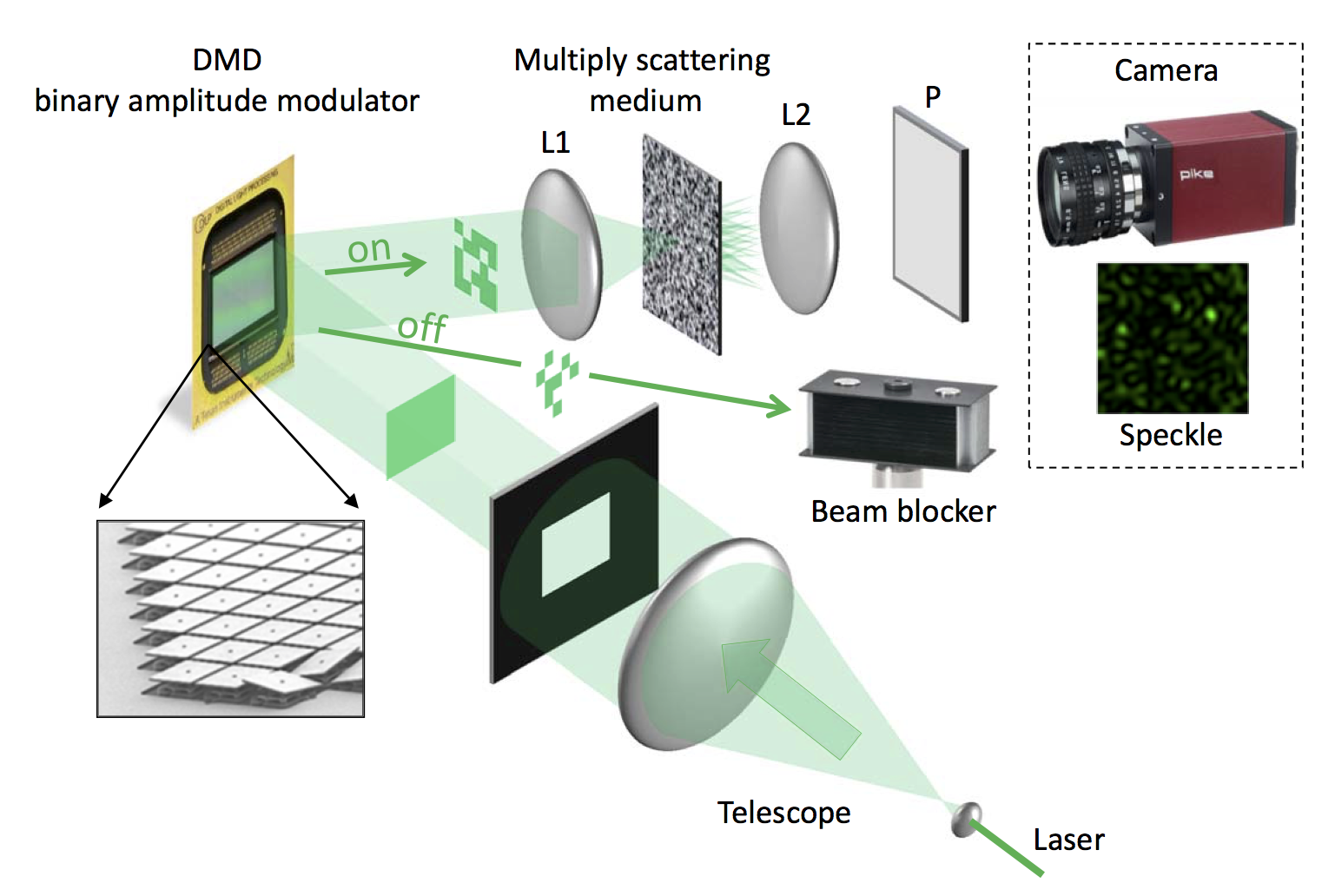Intensity-only Optical Compressive Imaging Using a Multiply Scattering Material: A Double Phase Retrieval System
B. Rajaei, E. W. Tramel, S. Gigan, F. Krzakala, & L. Daudet

Astract
Reconstruction of images from noisy linear measurements is a core problem in image processing, for which convex optimization methods based on total variation (TV) minimization have been the long-standing state-of-the-art. We present an alternative probabilistic reconstruction procedure based on approximate message-passing, Scampi, which operates in the compressive regime, where the inverse imaging problem is underdetermined. While the proposed method is related to the recently proposed GrAMPA algorithm of Borgerding, Schniter, and Rangan, we further develop the probabilistic approach to compressive imaging by introducing an expectation-maximization learning of model parameters, making the Scampi robust to model uncertainties. Additionally, our numerical experiments indicate that Scampi can provide reconstruction performance superior to both GrAMPA as well as convex approaches to TV reconstruction. Finally, through exhaustive best-case experiments, we show that in many cases the maximal performance of both Scampi and convex TV can be quite close, even though the approaches are a prori distinct. The theoretical reasons for this correspondence remain an open question. Nevertheless, the proposed algorithm remains more practical, as it requires far less parameter tuning to perform optimally.
BibTeX
conference{btg2016,
Author = {Boshra Rajaei and Eric W. Tramel and Sylvain Gigan and Florent Krzakala and Laurent Daudet},
Booktitle = {Proc. {IEEE} Int. Conf. on Acoustics, Speech and Signal Processing (ICASSP)},
Title = {Intensity-only Optical Compressive Imaging Using a Multiply Scattering Material: A Double Phase Retrieval System},
Year = {2016}}